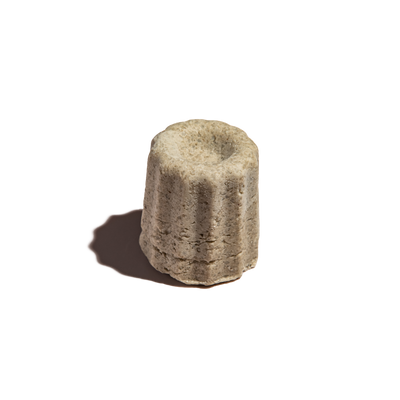Surfactant-based Solid Shampoo VS Soap Shampoo Bars - What's the difference?

Credits: Reusable Nation
With the growing trend of solid shampoos, you must be wondering what the differences are, and why is there such a wide range in prices? We will now do a crash course to help you sieve out the good from the bad, and how to choose one that suits you.
In general, there are 2 types of Solid Shampoos - Surfactant-based and Soap-based.
SURFACTANT-BASED SOLID SHAMPOO

Credits: Our own Organic Rose Solid Shampoos!
Appearance: Slightly rough, non-slippery
Price: $$-$$$
pH: Slightly acidic or Neutral
Surfactant-based solid shampoos are formulated to be the closest to liquid shampoos – minus the water. These shampoos contain a rich concentration of surfactants, which are cleansing (and foaming) agents that help to cleanse away oil and dirt impurities from your hair. These shampoos are typically lower in pH and thus, will not disrupt the oil balance on your scalp. Depending on the maker, they may use gentler (but more expensive) surfactants (like Sodium Lauryl Sulfoacetate or SLSA) or harsher (and cheaper) ones (like Sodium Lauryl Sulphate or SLS).
If you are a bit of a geek, read on to understand further the chemistry of how surfactants in shampoos work!
When hair gets dirty, there are two types of dirt: solid impurities and oily deposits. The oily deposits come from natural sebum which is produced in the hair follicles. Solid impurities are just naturally picked up from the environment (urban pollution anyone?).
Although rinsing the surface with water can remove some of the dirt, oily deposits will tend to adhere to the more lipophilic surfaces of hair and skin. Surfactants in shampoos help get rid of these oily deposits. The lipophilic (oil-loving) ends of the molecules are attracted to and align with the lipids on the surface of hair and skin. Meanwhile, the hydrophilic (water-loving) ends of the molecules align toward the surface of these deposits, thereby increasing the hydrophilicity. Simply put, surfactants help to lift oil and solid dirt from your hair and make it easy for water to rinse them away!
SOAP-BASED SOLID SHAMPOO
Appearance: Smooth, like regular soaps
Price: $-$$
pH: Alkaline, usually above 7
These shampoo bars are made either through a Hot or Cold Soap-making process using oils and Sodium Hydroxide (commonly known as Lye). They are no different from regular bar soaps except that they are usually made with ingredients that are targeted for hair. The pH of these shampoos also tend to be alkaline – and that can disrupt the acid mantle of your scalp, which has a natural pH of 4.5-5.5. The result? The cuticles of your hair stick up, giving the “frizzy look”. Hence, an acidic rinse is usually recommended after shampooing to balance out the pH of the scalp. These shampoos are usually made without any harsh sulphates.
Geek section:
For Cold-Process Solid Shampoos/Soaps, ingredients are added to lye to kickstart the saponification process and cured for 6-8 weeks before it is ready to be used. In Hot-Process, an external heat source is used and hence, saponification and curing is quicker. The process creates a more textured and rustic finish. The main factor you must note is that Lye, the essential ingredient in soaps, has a pH of 14. Hence soaps that are not carefully balanced out will tend to be alkaline and can even irritate your scalp and skin!

Credits: Soap Queen
CONCLUSION?
In conclusion, depending on your hair type and budget, you can try out either one of these solid shampoos. But do avoid harsh detergents like SLS (we cannot stress this enough!) in Surfactant-based solid shampoos as they will strip your hair of all its moisture in the process of cleaning. If you choose to go for a soap-based shampoo bar, do put in the extra effort of doing a diluted Apple Cider Vinegar rinse every now and then to ensure that your scalp is well-balanced and hair cuticles relaxed.
Remember that it may take a few solid shampoos to figure out what is right for you and your hair, so if the first one you try doesn’t leave you and your hair feeling right, just try a different one from the range, or a completely different brand - don’t give up on solid shampoos just yet!
Want to know more?
To read up on what to expect when you switch over to Solid Shampoo, read our post here
To understand more about how pH of shampoos affect our hair, click here
To check out our range of Solid Shampoos and Conditioners, click here









Leave a comment